Quantum cryptography in space or whats inside a chinese satellite?
On August 16, the Long March-2 rocket launched a Chinese satellite QSS into orbit. He faces a revolutionary task: to implement a scheme of quantum key distribution between Beijing and Vienna, at a distance of more than 7,000 kilometers. Today's story is about the details of this mission and similar experiments in the past and the future.
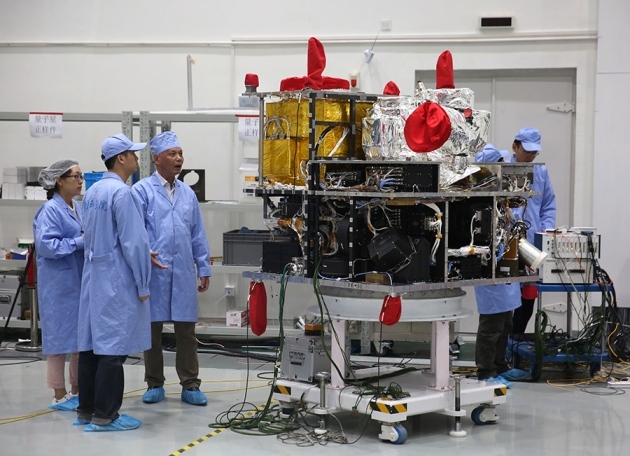
The lines of quantum cryptography, which first appeared near Geneva, are now successfully growing all over the world. Unfortunately, so far their length does not exceed a couple of hundred kilometers, and the reason for this is quite banal: the absorption of light in optical fiber. It was this problem that stimulated work on quantum cryptography through the air, and now in space: in the vacuum, the problem of light attenuation is simply absent.
The idea to bring quantum communications to the orbital level is not new, but the path to its implementation has been long. First of all, it was necessary to make sure that this is actually done at least in the air. The most noteworthy was the experiment in 2007 on the Canary Islands, where the key was distributed between La Palma and Tenerife (the distance between them is 144 km).
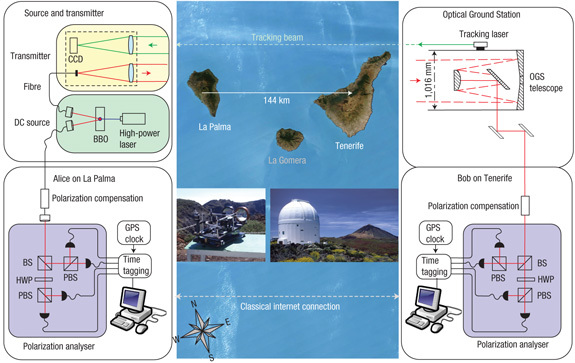
Along the way, we managed to make sure that atmospheric fluctuations interfere, but not much. And it also became clear that in the role of a receiver it is imperative to use a telescope: it is large and it is easier to “aim” at it.
The next question: is it really possible to send a single photon into space at all, or will it be lost along the way? This was checked using a telescope in the south of Italy: a weak light pulse was sent through it to the satellite reflector, which returned the light back to the same telescope. It remained to calculate the percentage of returned photons - it turned out to be small, but quite adequate for practical applications.

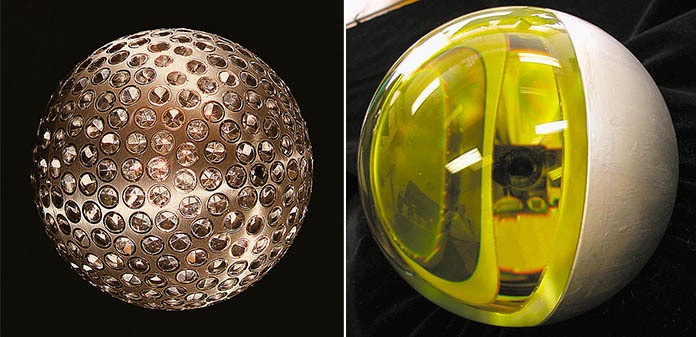
Reflecting satellites: LAGEOS on corner reflectors (NASA, 1976) and BLITS on the Luneberg lens (Roscosmos, 2009). Their main purpose is geodesy: the refinement of the shape of the Earth, the study of the movement of tectonic plates.
A couple of years later, Professor Jianwei Pan from the Hefei Institute becomes the youngest scientist elected to the Chinese Academy of Sciences. There, he almost single-handedly convinces the leadership to begin work on his long-time dream - a full-fledged companion for quantum cryptography. The work began in 2011 and should have taken five years - as we can see, the developers turned out to be extremely punctual.

What is planned to do
The main tasks of the satellite are three.
1. Quantum distribution of keys between Beijing and Vienna. Before this, it is planned to test both communication channels one by one: first, generate a key between the satellite and Beijing, then between the satellite and Vienna.

Why precisely Vienna? Historically this happened: Anton Zeilinger, former Pan supervisor and one of the authors of experiments on the Canary Islands and Italy, works in Vienna. If the experiment is successful, the next in line to contact Beijing may be telescopes in Germany and Italy.
2. Entanglement at great distances. In this experiment, it is planned to generate two entangled photons on the satellite and send them to Earth: one to the south of China, the other to Tibet. If after such a flight confusion persists (and the distance between telescopes is over a thousand kilometers), then this experiment will not only break all existing records, but also pave the way for key distribution with the help of entangled particles.
3. Quantum teleportation. It is planned to teleport the quantum state from Earth to the satellite. For this, the satellite will generate two entangled photons, after which one of them will go to Earth. Well, actually teleportation is obtained by cunning manipulations with entangled photons.
If all the tasks are completed successfully, then Pan dreams of launching several similar satellites and the emergence of a “quantum Internet”. And about quantum cryptography between the Earth and the Moon as part of the Chinese lunar program. But the Chinese state seems to have other plans: they would like to use quantum cryptography for secure communication with the administration of one of the rebellious regions in northern China.
Quantum Cryptography FAQ
How is a message transmitted over a quantum communication channel?
No Quantum communication allows Alice and Bob to generate a secret key that cannot be intercepted. After that, they encrypt their messages to them and send them via classic communication channels. The key, of course, is one-time: after use it is discarded.
Why is the key impossible to intercept?
I will answer outside the box. Quantum mechanics allows a photon to carry more than one bit of information. But in the process of reading it’s really only one bit to read. Therefore, an attacker needs to know exactly how to count the information sent - otherwise it will be lost.
An important condition for this is that Alice should always transmit exactly one photon to Bob. If she sends two identical photons, then Eve (the malefactor) can take possession of one of them, and Bob won't even notice.
That is, there are no loopholes in principle?
Let's just say the physical principle is flawless. But the loopholes remain: single-photon sources sometimes send two photons each, single photon detectors can be lit with a bright beam, switching of polarization rotators can be traced by current jump and so on. Quantum cryptography is a new Enigma, and whether it is realistic to crack it is not yet clear.
Is it possible to distribute the key somehow?
With single photons work hard. Recently learned to do the same with the help of weak beams, in a sly way changing their intensity. Such states are called decoy states (I don’t know a Russian name, probably something like imitating states).
You can also generate a key using entangled photons: one is left with Alice, the second is sent to Bob. And you can generally entrust the distribution of the key to an attorney: he will generate two photons and send one to Alice, the second to Bob. This method has its advantages (for example, it is easier to check the integrity of the communication channel), but it is much more difficult to implement.
So, now remind you what intricate particles are.
We take a box with a pair of shoes and without looking, we groping one shoe in one bag, the second in another bag. We do not know in which bag the left shoe, and in which - the right one. But we are sure that different shoes are in different bags.
The same with tangled particles. With one exception: the shoes themselves have not yet decided which of them is left and who is right . This is solved at the moment of opening the bag (that is, measuring the particle).
Space Detective: What's Inside the Satellite
Not surprisingly, the information on the space program of China is very difficult to find. Information on QSS is also extremely small, and it had to be collected bit by bit. The main source turned out to be Pan's scientific publications - including in Chinese journals, which even Google doesn’t really index :).
First of all, the satellite must be incredibly accurately aimed at ground-based telescopes. And telescopes on the satellite too. For this, both the satellite and the telescope shine at each other with a green and blue laser, after which they are directed to the maximum of the beam of the partner. The guidance system was developed strongly in advance and tested in the best Chinese traditions - in a balloon.

The next step is the light source for the quantum key distribution. Atmospheric transmission is maximum for the wavelength of 700 nm (red), but it is much easier to operate at 850 nm (infrared), since this wavelength is used in telecom. An industrial laser diode, thermal stabilization and intensity feedback were mounted in a small package adapted for space (I still did not understand what was adapted there - probably the size):
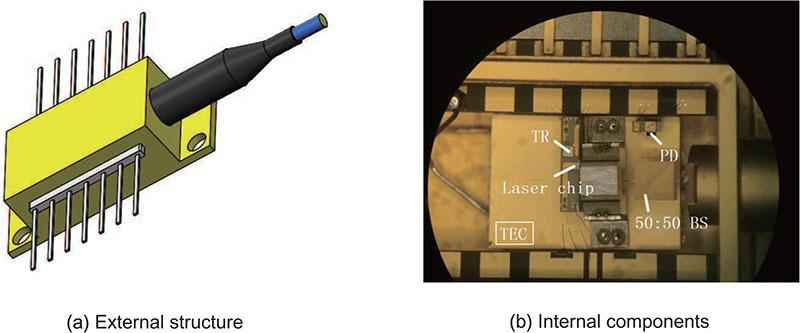
There are only eight diodes, they have different polarization. For the transmission of one "bit" a diode and intensity are randomly selected. All optics gently rammed packaged in a small case. On the satellite, this source is in several copies.

The red circles in the left picture are the optical fiber: the length of the optical paths from all the diodes must be the same, so the light from the diodes closest to the output must be kept in the fiber for some time.
Pulses are sent with a frequency of 100 MHz, but due to the protocol features, the bit rate is only 574 bits per second. The satellite is in line of sight for 5.5 minutes, so a key 120 kb in length can be generated in one span. Not so bad.
Yes, the key between Vienna and Beijing is generated in two passes: on the first span the satellite creates key 1 with Beijing, on the second - key 2 with Vienna, then encrypts key 2 with key 1 and sends the result to Beijing. Beijing decrypts the message, recognizes key 2, and uses it to communicate with Vienna.
For experiments with entanglement and teleporting, a source of entangled photons is needed. Something similar has already been done by a team from Singapore : a nonlinear crystal is taken for this, in which laser light with a wavelength of 405 nm is split into pairs of entangled photons with a wavelength of 810 nm. Both photons are sent to two ground-based telescopes, where they are detected.
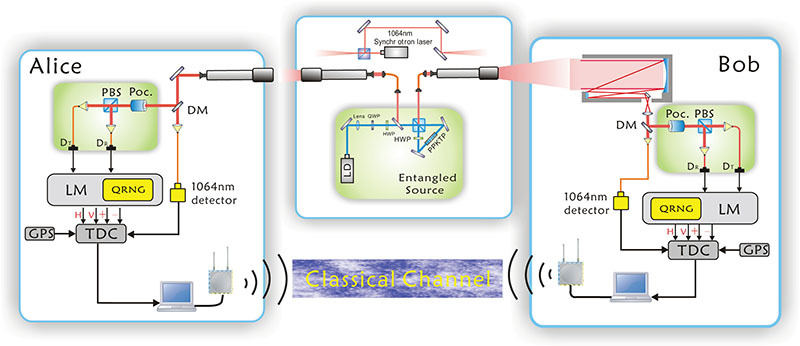
The source of entangled photons is in the middle. To prevent telescopes from missing an entangled photon, a short laser pulse at another wavelength, 1064 nm, is sent to them simultaneously with it. We tested all this on the same lake where the balloons were launched.
And finally, the satellite itself . Here, everything is in the best traditions of Chinese cosmonautics: it’s really possible to find a few photos in the assembly shop (like at KDPV) and such a scheme from which, frankly, little is clear:
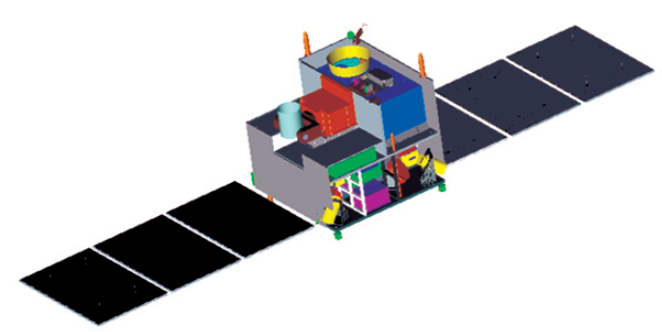
The satellite already has three names: QSS (Quantum Science Satellite), QUESS (Quantum Experiments at Space Scale) and Mozi (in honor of the ancient Chinese philosopher Mo-Tzu). It weighs 500 kg, launched into a 500-km orbit . Life expectancy is two years.
In the rest of the world
In addition to the absolute favorites from China, teams from several countries also participate in the quantum-space race:
Singapore. It was they who launched into orbit the first source of entangled photons. It turned out, unfortunately, only the second time, as I recently talked about .
Canada. The collaboration from Waterloo and Toronto suggests leaving the photon source on Earth, and launching only a detector into space. As a result, the microsatellite, flying first over Alice, and then over Bob, can in turn generate with both the key:

then help them develop a common key. Since the transmitter is on Earth, a 40 cm telescope will have to be installed on the satellite:

and a detector with four channels for different polarizations:
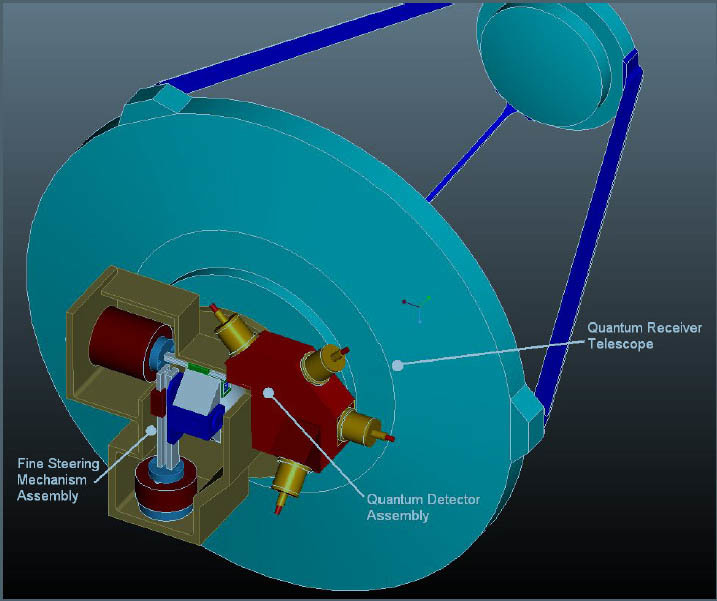
To date, the development of the detectors and the guidance system has been completed ( funny video ), and the satellite itself, called QEYSSat, has to go flying in 3-5 years.
Italy. The simplest solution offered at the University of Padua: both the photon source and the detector are proposed to be left on Earth, and the connection between them can be implemented through a mirror located on the satellite. Before the realization of the idea in life has not yet reached, therefore, the authors are working out the technology on satellites reflectors. For example, last year they sent qubit photons to the satellite, after which they were able to successfully read them.
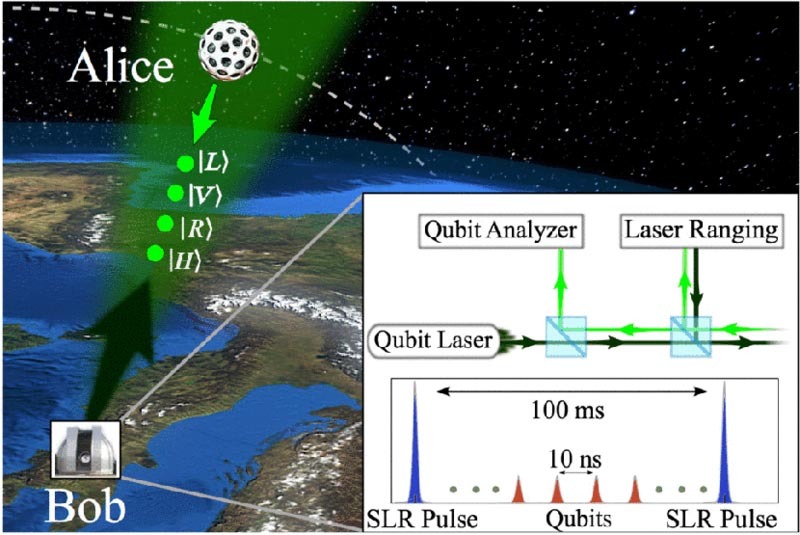
The lack of satellites with a mirror is easy to understand from the good old rule “the angle of incidence is equal to the angle of reflection”: if the mirror is set with an error to the incident beam, then the same error will be in the reflected one. As a result, the mirror will have to expose with twice as much accuracy, which is quite difficult.
And again Austria. In space, there is already a whole laboratory with excellent conditions for experiments and wonderful staff on board. And there is a module "Dome" with huge panoramic windows. Why not try to detect photons right through one of these windows? The only disadvantage is that the direct visibility between the central window of the Dome and any point on Earth lasts no more than 70 seconds. Although for simple experiments this will be enough.

Probably, one of these proposals is the future. But they are still far away. In the meantime, we will wait for news from QSS.
Good reviews in Nature magazine: one , two , three .
Experiments on the Canary Islands and Matera .
The Department of Quantum Physics and Quantum Information , which is headed by Jianwei Pan.
')
Source: https://habr.com/ru/post/397149/
All Articles